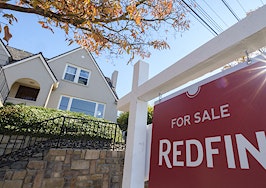From online showings to all-digital signings and closings, the digital transaction has fully come into its own. All month, Inman examines the companies and technologies driving this new world of digital transaction.
In an inventory-starved market where cash offers provide an edge and sellers are worried about being able to find a home to buy, “buy-before-you-sell” bridge loan providers are gaining steam, according to a quarterly report from real estate tech firm zavvie.
Zavvie’s latest Seller Preferences Report, which debuted in December and covers all of the selling options available to homeowners in the U.S., found that, in the fourth quarter, sellers accepted offers from bridge providers five times more often than they accepted offers from real estate companies that buy homes directly from private sellers online and then re-sell them, known as iBuyers.
iBuyers include companies such as Opendoor, Zillow, Offerpad and Redfin, while bridge providers include companies such as Knock, EasyKnock, Homeward and Ribbon.

Stefan Peterson
“The modern agent brings iBuyer, bridge solutions, and an open market listing — all of the selling options — to the table,” said Stefan Peterson, zavvie’s chief data officer and co-founder, in a statement.
“Instead of fearing what disruptors are doing, the modern agent co-ops these new selling methods because they are the trusted advisor. The modern agent helps consumers fully understand all their choices, showing the advantages and disadvantages of each.”
The report found that, due to pandemic-induced buying pauses, iBuyer purchases fell 57 percent in 2020 compared to 2019. Nonetheless, both iBuyers and bridge providers continued to expand into new markets and to grow their “buy boxes” — the types of homes they’re willing to buy based on price range, age, condition, location and other factors.
“iBuyers were down [last year] but definitely not out,” Peterson said. “iBuyers continued expanding into new markets and are buying higher-priced homes, meeting seller demand, and delivering high seller satisfaction. But the biggest surprise for sellers in 2020 is the rapid emergence of the bridge buy-before-you-sell providers.”

Source: zavvie
According to the report, iBuyers’ offer strength was down 3.1 percent year over year in the fourth quarter, declining to 95.1 percent of market price, compared to 98.6 percent of market price in 2019. Zavvie defines “market price” as the price the property sold for when the iBuyer sold it, as indicated in county records, according to Peterson.
“This continued a trend of declining offer strength that began following the pandemic shutdown,” the report said. “It appears that iBuyers are factoring market uncertainty into their offers.”
Still, the offer acceptance rate for iBuyers rose to 6.1 percent in Q4, up 45 percent from 2019, zavvie said. Why would that be when iBuyer offers are weaker and homes on the open market are selling like hotcakes?
“We believe the answer is that for some sellers, the iBuyer benefits of speed, certainty, convenience — and, perhaps above all, safety — are compelling enough to justify lower offer amounts, even in a strong seller’s market,” the report said.
At the same time, though, the offer acceptance rate for bridge programs was 31 percent in the fourth quarter — five times higher.
“For many sellers, moving is a ‘chicken and egg’ problem: they can’t buy without selling, but they won’t sell unless they know there’s a house they can buy,” the report said. “Bridge programs solve this problem.”
Comparatively low service fees may be a factor. Bridge program fees range between 1.25 percent and 3 percent. Meanwhile, service fees for iBuyers dropped 21 percent year over year in 2020, to 6 percent, compared to 7.6 percent in 2019.
“Opendoor took the lead in reducing its fees to 5 percent or less, averaging 4.6 percent in Q4 based on our internal metrics,” the report said. “Service fees for other iBuyers remained in the 7 percent to 8 percent range.”
In addition, the average price point for bridge transactions was 72 percent higher, at $425,000, than for properties purchased by iBuyers ($265,000).
“Bridge program buy boxes accommodate higher-priced properties than iBuyers can, and apparently, bridge programs are a better fit for sellers at higher price points,” the report said.
The average concession that iBuyers charged sellers for “prep and repairs” rose from 3.2 percent in 2019 to 3.6 percent in 2020 while the number of days it took to sell a home rose from 44.7 in 2019 to 47.4 in 2020.
“For iBuyers across all markets, the average for Q4 was 48.5 days, a modest but notable increase compared with 44.7 days for 2019,” the report said. “One benefit of selling to an iBuyer is the seller gets to choose their closing date, so the increased time to close is purely a reflection of seller preference. We believe this increase is attributable to sellers needing more time to find their next home in tight-inventory markets.”
Zavvie found that seller satisfaction with iBuyers is high and rising. “Notably, average seller satisfaction passed 9.0 on a scale of 1-10” in the fourth quarter, the company said.
“The vast majority of those who sell to an iBuyer are glad they did, despite their reduced financial proceeds from the sale,” the report added. “Going forward, it will be interesting to see how this satisfaction translates into repeat business and ‘word of mouth’ marketing for the iBuyers.”








